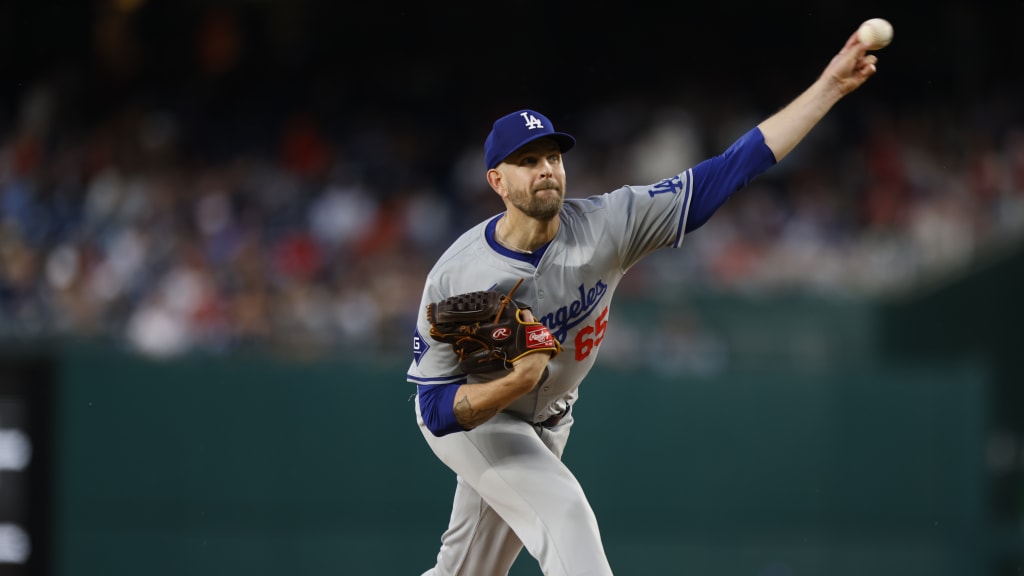The Boston Red Sox have bolstered their pitching rotation by acquiring left-handed pitcher James Paxton from the Los Angeles Dodgers, the teams announced on Friday. In exchange, the Dodgers receive minor league infielder Moises Bolivar. To accommodate Paxton on the 40-man roster, the Red Sox transferred right-hander Bryan Mata to the 60-day injured list. This move was anticipated as the Red Sox sought additional stability in their rotation, having previously employed Paxton during the 2022 and 2023 seasons, as reported by WEEI’s Rob Bradford.
Paxton’s departure from the Dodgers was somewhat unexpected. Despite making all 18 of his scheduled starts this season and posting a solid 4.43 earned run average, Paxton’s performance has shown some decline compared to previous years. His ERA is similar to the 4.50 he recorded over 96 innings with Boston last year, but underlying metrics suggest a less impressive performance this year.
In comparison to his time with the Red Sox, Paxton’s fastball velocity has dropped from an average of 95.2 mph to 93.2 mph this season. His strikeout rate has also fallen significantly, from 24.6 percent to 16.4 percent, while his walk rate has increased from 8 percent to 12.3 percent. Furthermore, his average exit velocity has risen from 89.3 mph to 90.8 mph, and his hard-hit rate has climbed from 39.6 percent to 43.3 percent. Despite these concerning trends, Paxton has managed to maintain a career-low average on balls in play and a reduced home run-to-fly ball rate.

The Red Sox do not necessarily need Paxton to be a top-of-the-rotation pitcher. With their rotation depth currently stretched thin—especially given the career-high workloads of several pitchers including Tanner Houck, Kutter Crawford, and Cooper Criswell—adding a reliable back-end starter like Paxton could provide significant value. Paxton’s contract is relatively affordable, making this acquisition even more appealing.
Paxton’s one-year contract includes $7 million in guaranteed salary plus an additional $6 million in attainable bonuses. Of the guaranteed amount, $3 million was paid upfront as a signing bonus, and he has already earned the full $6 million in incentives. This means the Red Sox will only owe him approximately $1.42 million for the remainder of the season. This minor adjustment will push Boston’s payroll to about $180 million and bring their luxury tax ledger to an estimated $218.1 million. This leaves the Red Sox with approximately $17 million before hitting the first luxury tax threshold, allowing room for further acquisitions if necessary.
On the Dodgers’ side, trading Paxton does not signify a sell-off as Los Angeles leads the NL West and is a strong postseason contender. The Dodgers have recently welcomed Tyler Glasnow and Clayton Kershaw back from injury, adding depth to their rotation. With additional prospects like Yoshinobu Yamamoto expected to return in August and Walker Buehler anticipated to return later in the season, Paxton’s role has become redundant.
In return for Paxton, the Dodgers have acquired 17-year-old Moises Bolivar, who was signed by the Red Sox as an amateur free agent from Venezuela earlier this year for a $25,000 bonus. Bolivar, while not considered a top-tier prospect, has shown promise in his professional debut. Playing for Boston’s Rookie-level Dominican Summer League team, he has posted a .270/.364/.423 batting line with three home runs and a near-even ratio of walks to strikeouts. Bolivar, standing at six feet and weighing 175 pounds, has primarily played third base but has also seen time at first base.
This trade reflects strategic moves by both teams to address their respective needs, with the Red Sox strengthening their rotation and the Dodgers adding a young prospect to their system.

